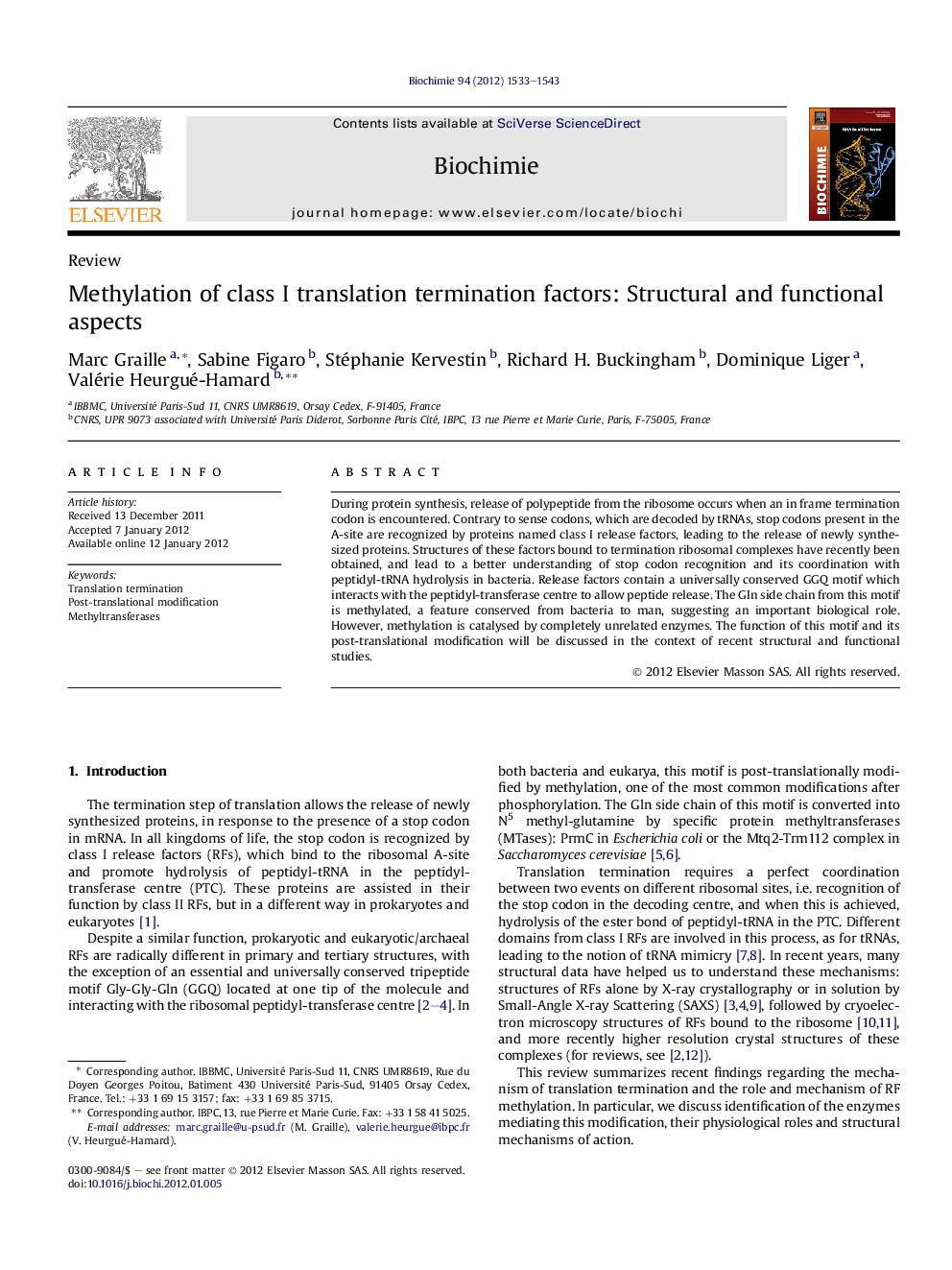| Article ID | Journal | Published Year | Pages | File Type |
|---|---|---|---|---|
| 1952351 | Biochimie | 2012 | 11 Pages |
During protein synthesis, release of polypeptide from the ribosome occurs when an in frame termination codon is encountered. Contrary to sense codons, which are decoded by tRNAs, stop codons present in the A-site are recognized by proteins named class I release factors, leading to the release of newly synthesized proteins. Structures of these factors bound to termination ribosomal complexes have recently been obtained, and lead to a better understanding of stop codon recognition and its coordination with peptidyl-tRNA hydrolysis in bacteria. Release factors contain a universally conserved GGQ motif which interacts with the peptidyl-transferase centre to allow peptide release. The Gln side chain from this motif is methylated, a feature conserved from bacteria to man, suggesting an important biological role. However, methylation is catalysed by completely unrelated enzymes. The function of this motif and its post-translational modification will be discussed in the context of recent structural and functional studies.
► The recognition of stop codon by release factors (RFs) induces peptide release. ► The universally conserved GGQ motif from RFs is methylated from bacteria to man. ► Trm112 activates several methyltransferases acting on translation components.
